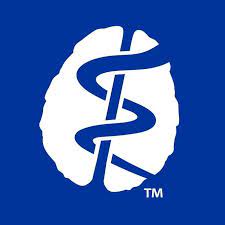The 2021-2022 academic year is starting and there is a lot of fear and uncertainty about it, especially as the pandemic continues. News about it is everywhere and some of it is confusing and overwhelming, even for those in the medical field. A myriad of questions remains unanswered. However, as schools reopen, there is one underlying question many families are facing: Is it the right thing to send my child(ren) back to school? Fortunately, there is a lot of information and resources addressing this question. The simple answer is yes, children should be back in school.
The American Psychiatric Association (APA), American Academy of Pediatrics (AAP), and American Academy of Child and Adolescent Psychiatry (AACAP) support a safe return to school. Education and school attendance are essential in children’s development.
For a safe return to school, AAP encourages COVID-19 vaccination for those who are eligible, influenza vaccination when possible, and the continuation of routine vaccination schedules. AAP recommends COVID-19 vaccination for all children and adolescents who are 12 years and older (unless contraindicated) and encourages mask use for those children who cannot be vaccinated. See AAP News for more information on this.
Given the plethora of news about COVID-19 and the uncertainty of school structures, many children and families may experience higher levels of anxiety about returning to school. As a result, to maximize the success of student reentry, parents and schools should acknowledge and validate emotions related to this topic. Here are some proactive tips to mitigate anxiety.
Parents may consider establishing a regular routine: Such as sleep hygiene, physical activity, and study times. Creating a regular structure will assist in anchoring the child’s activities and anxiety feelings. If school has not yet started, consider transitioning to the schedule before it does.
Buddy up with a similarly aged peer: Families may consider creating a buddy system with a peer for their children to normalize the transition process and create more prosocial interpersonal connections.
Openly validating the child’s difficult emotions and offering contingency rewards: Depending on the child’s developmental stages, anxiety and emotional distresses may manifest non-verbally. For example, younger children may not be able to verbalize “I feel anxious” and may display more irritability or avoidance behaviors. Furthermore, for children who may have a history of school anxiety, which may be magnified during this period, parents may consider creating a small reward after a successful reentry, such as, a small toy or some one-on-one parent time after a week of attendance.
In addition, while there may be some mild trepidation or shyness about resuming in-person classes, especially after a year of remote learning, parents should be mindful of anxiety “red flags” in their children’s presentations. For “red flag” situations, parents and schools should immediately reach out to a child and adolescent psychiatrist for further diagnosis and treatment, as they may portend major undiagnosed or untreated psychiatric illnesses:
Significant distress during or in anticipation of school that greatly disrupts a child’s daily activities (e.g., excessive tantrums, unbeatable crying, refusal of eating);
Severe physical symptoms (e.g., repeated vomiting, severe stomach aches);
Worsening mood symptoms (e.g., increasing depressive symptoms);
Any endorsement of safety concerns (e.g., thoughts of self-harm, suicidality, threats of harming others).
In conclusion, a safe return to school is highly recommended for students of all ages. Parent’s anxiety about their kids’ safety to return to school is expected but should not defer their children from the safe return to school.


